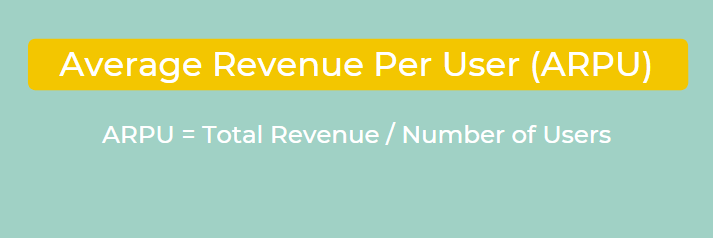Average Revenue Per User - What is it?
Average Revenue Per User (ARPU) is a metric for subscription or user-based businesses that indicate the level of profitability generated from each of its subscribers. It is a particularly popular indicator in the SaaS, media, and telecommunications industries, which rely on subscribers for income.
What is APRU?
APRU is not included in the Generally Accepted Accounting Principles, meaning that firms have the option of whether or not to track APRU without any regulatory pressure.
That being said, APRU is an immensely important tool for subscription-based businesses. By calculating and tracking APRU, executives and investors can understand a firm's potential for revenue generation at the user level.
How to Calculate APRU
This is the formula to calculate APRU, assuming that the goods produced are intended for sale:

APRU is generally calculated on a monthly basis, however, some firms might extract more benefit from a quarterly or yearly calculation. Once a period is defined, the calculation is simple: divide the total revenue generated during that time period by the number of users. Because the number of users can fluctuate during a period, it is important to accurately estimate the number of units per period to arrive at a meaningful APRU.
Who Uses APRU?
As we mentioned earlier, APRU is most prominently used by the telecommunications and media sectors to track the amount of revenue generated per subscriber. However, APRU in the telecommunications sector is not only limited to monthly billings, but also accounts for calls and data that generate revenue.
APRU is also common in subscription companies such as internet providers, allowing investors to cross-compare competitors to determine the better investment.
The metric has also gained steam in the social media world, with Meta and Snap disclosing their APRUs to the general public. Here are the examples of both company's APRUs and how they impact valuation:
- Meta's APRU for 2021 was $40.96 with a market cap of $603.78 billion
- Snap's APRU for the fourth quarter was $4.06, with a market cap of $57.5 billion
Meta clearly has a more robust offering than Snap, which would indicate to investors that Meta may be a healthier investment in the current market.
Limitations of COGS
Investors and financial analysts have often referred to APRU as a vanity metric. Because the metric is quite general, investors outside of the company are skeptical of boastful metrics without understanding the details behind them.
In our previous example, Meta's APRU was astronomic compared to Snap's. However, it is highly possible that tens of millions of users do not regularly interact with the platform or its advertising. Because the firm has over a billion users, the distortion of a firm's true APRU could be impactful.
A data visualization tool like Toucan can aid a firm’s financial tracking efforts by catering to users with little data experience and enabling collaboration through the usage of cloud technology. The ability to track APRU and customer acquisition cost in real-time allows for full ownership of a firm’s data across multiple departments.
With a new generation data visualization tool, APRU becomes a valuable tool for investors and executives looking to understand a firm's revenue generated per subscriber or user.



